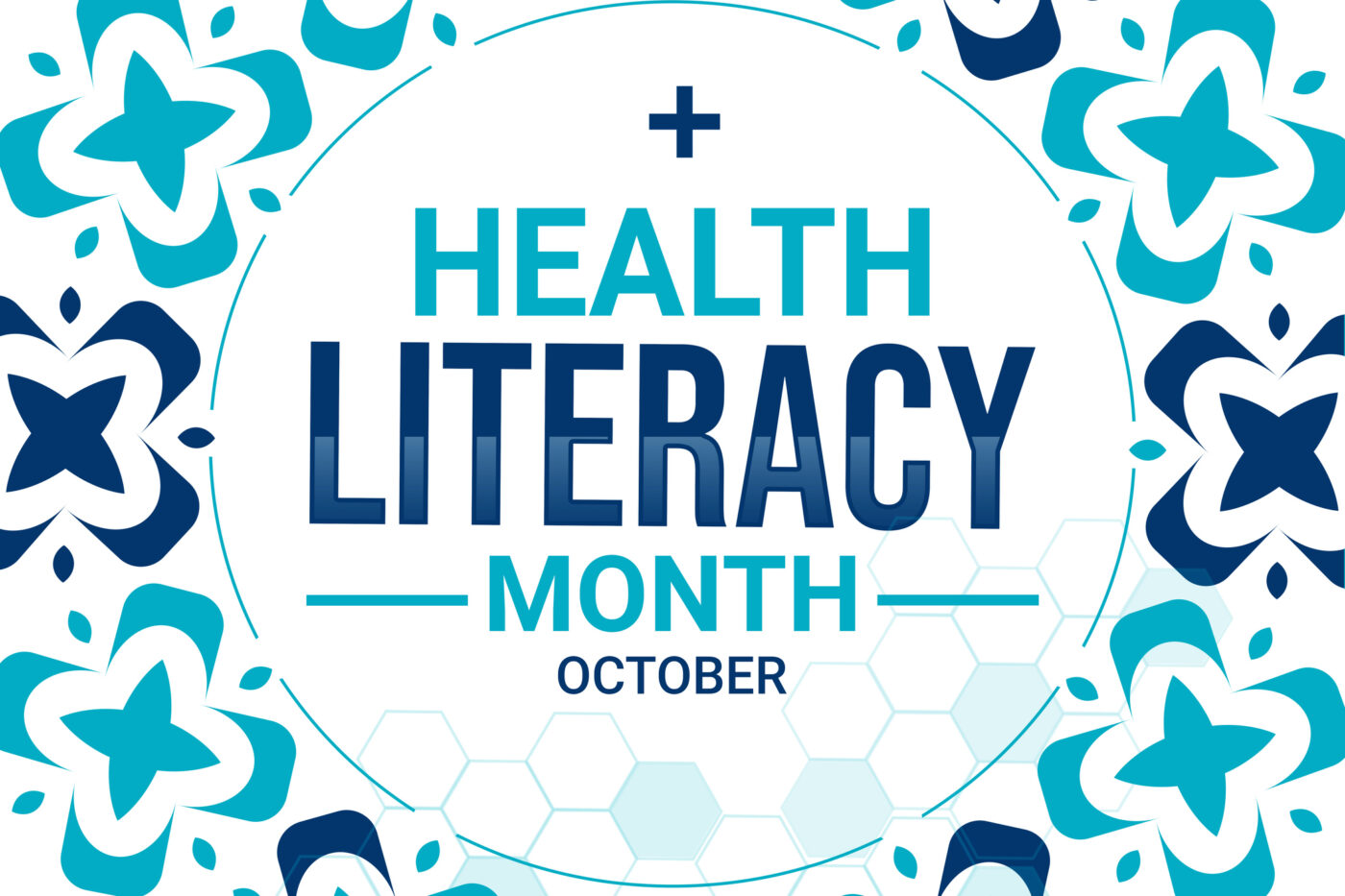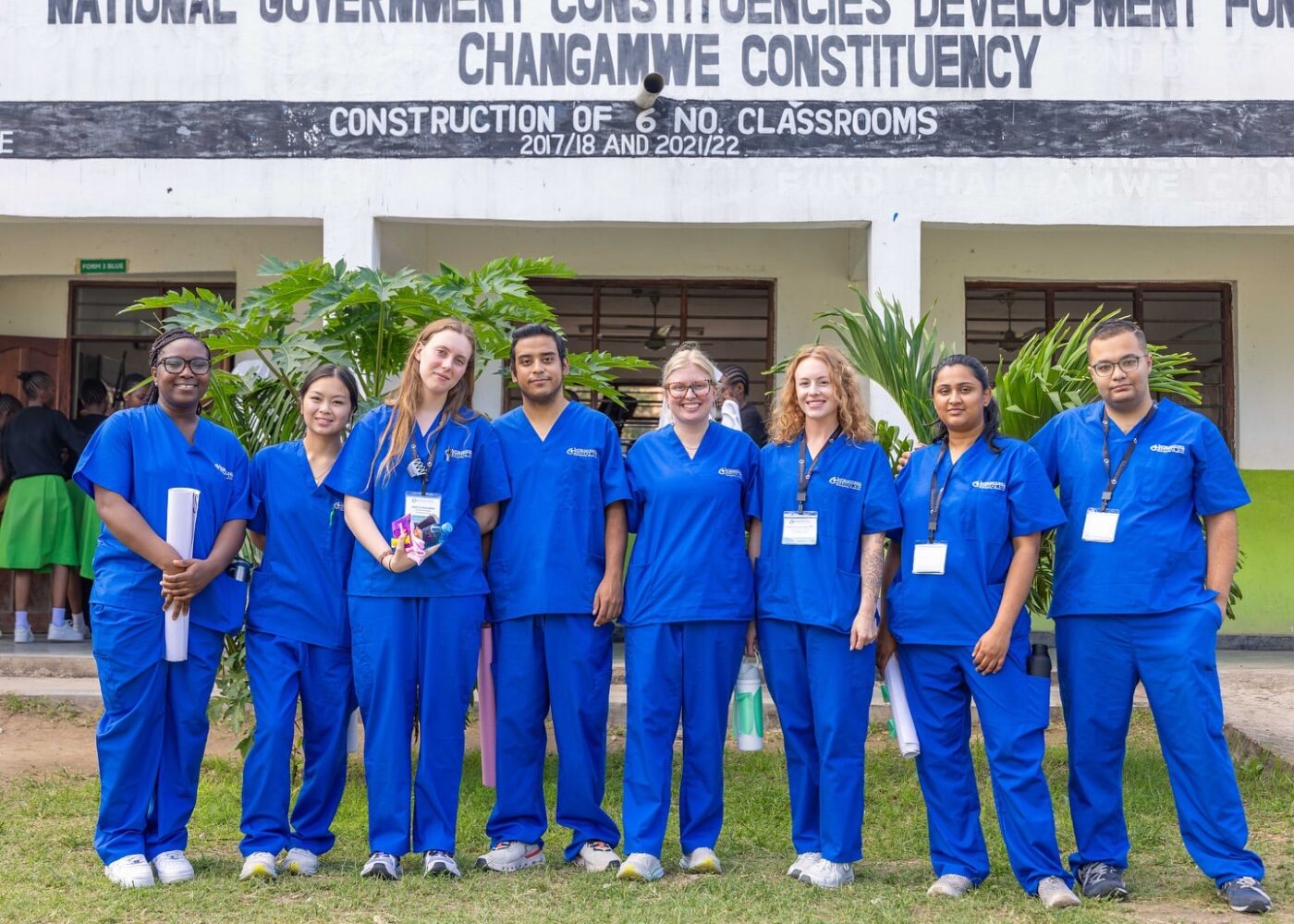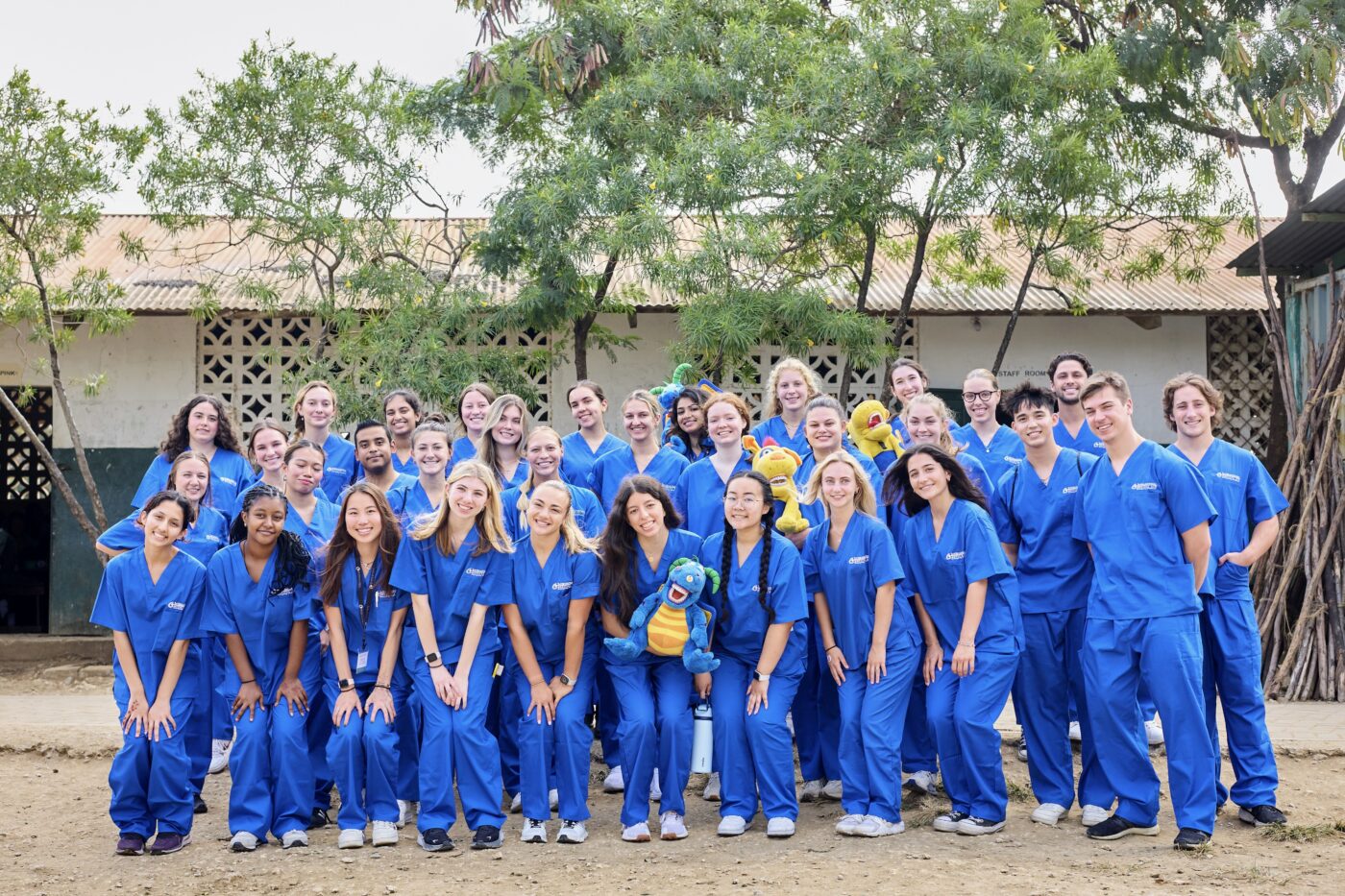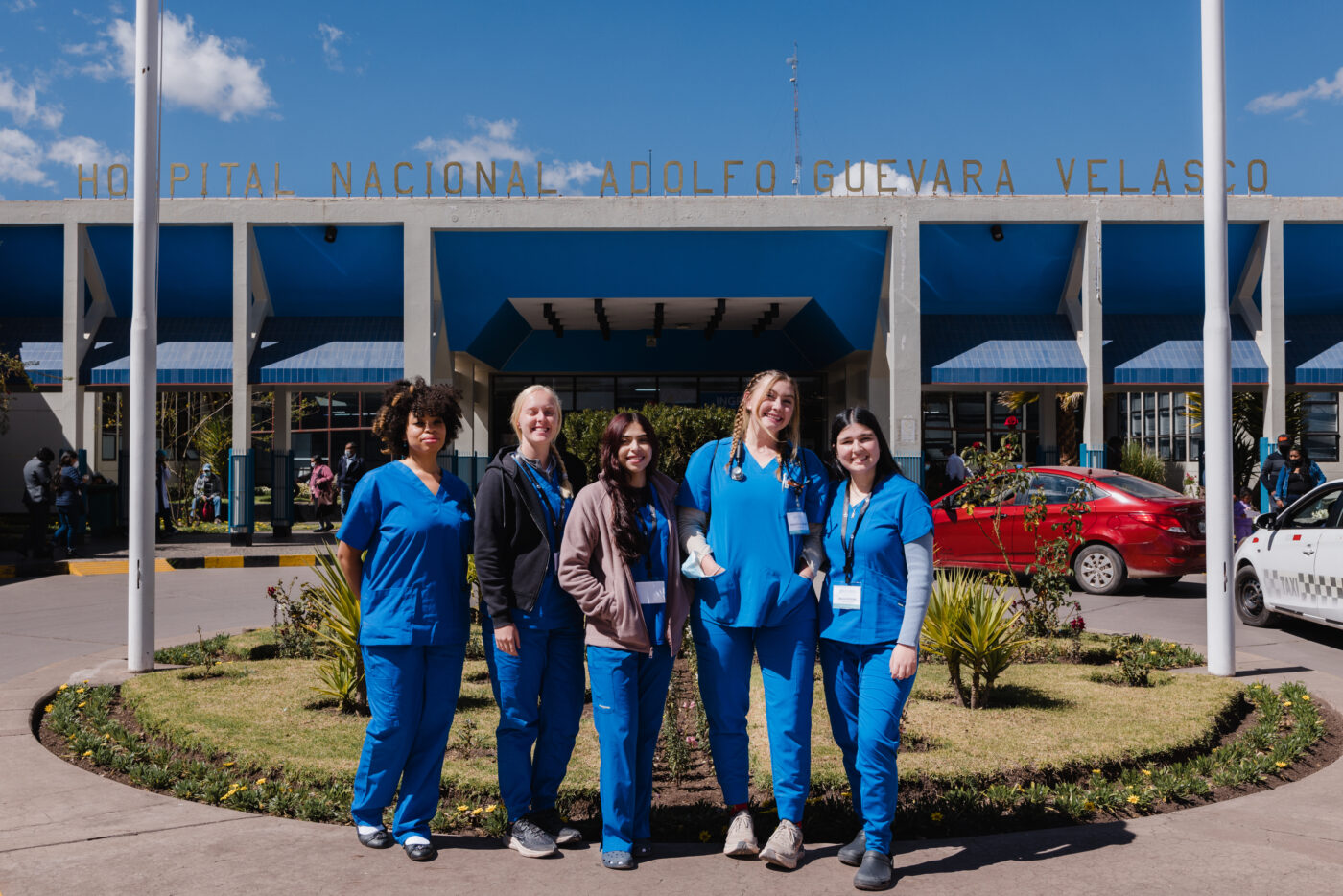As Health Literacy Month draws to a close, it’s an opportune moment to reflect on the strides we’ve made in our local communities and consider how we can extend our impact globally. Health literacy is not just a local issue; it’s a global challenge that affects millions of people worldwide. Let’s explore how participating in International Medical Internships can empower individuals to promote health literacy on a global scale, thereby contributing to healthier communities around the world.

Health Literacy
Health literacy is the ability to obtain, process, and understand basic health information and services needed to make appropriate health decisions. It’s a critical component of individual and community health, influencing outcomes ranging from disease prevention to management of chronic conditions. While significant efforts have been made to improve health literacy locally, there is a growing need to address this issue globally, especially in underserved regions where health disparities are most pronounced.
Meet Sarah, a medical student passionate about health literacy. After contributing to local initiatives during Health Literacy Month, she decided to take her efforts abroad through an international medical internship with International Medical Aid (IMA). Her experience highlights the profound impact that dedicated individuals can have when they choose to “Think Locally, Act Globally.”
The Importance of Health Literacy
Health literacy encompasses a range of skills necessary for individuals to make informed health decisions. These skills include reading and understanding prescription labels, navigating healthcare systems, and comprehending medical instructions. Low health literacy is associated with poor health outcomes, higher hospitalization rates, and increased healthcare costs.
Local Efforts During Health Literacy Month
Throughout October, communities worldwide come together to engage in a myriad of activities aimed at promoting health literacy. Health Literacy Month serves as a catalyst for raising awareness about the importance of understanding health information and making informed decisions. Local efforts during this month are crucial, as they lay the foundation for healthier communities and empower individuals to take charge of their well-being.
Hosting Local Workshops
One of the most impactful activities during Health Literacy Month is the hosting of local workshops. These workshops are designed to empower neighbors with essential knowledge about various health topics, such as nutrition, exercise, and medication management.
- Nutrition Education: Workshops often include sessions on balanced diets, understanding food labels, and making healthier food choices. For instance, community nutritionists might demonstrate how to prepare affordable, nutritious meals using local ingredients. Participants learn about the importance of vitamins, minerals, and other nutrients in maintaining good health.
- Exercise and Physical Activity: Fitness instructors or health educators may lead workshops on incorporating physical activity into daily routines. These sessions highlight the benefits of regular exercise, such as reducing the risk of chronic diseases like heart disease and diabetes. They might also provide practical tips for staying active, like walking groups or community sports events.
- Medication Management: Pharmacists and healthcare professionals educate attendees on the proper use of medications. This includes understanding prescriptions, adhering to dosage instructions, and being aware of potential side effects. Such knowledge helps prevent medication errors and ensures that treatments are as effective as possible.
These workshops often employ interactive methods, such as demonstrations, hands-on activities, and open discussions, to engage participants actively. By tailoring content to the specific needs of the community, these sessions make health information more relatable and actionable.
Engaging in Awareness Campaigns
Awareness campaigns are another cornerstone of Health Literacy Month activities. These campaigns aim to spread the word about the importance of understanding health information and making informed health decisions.
- Public Service Announcements (PSAs): Local media outlets broadcast PSAs that highlight key health messages. These might focus on topics like the importance of vaccinations, cancer screenings, or mental health awareness.
- Social Media Outreach: Communities leverage social media platforms to reach a broader audience, sharing informative posts, infographics, and videos. Hashtags related to health literacy help in creating a unified message and encourage community participation.
- Health Fairs and Exhibitions: Organizing health fairs allows community members to access a variety of health services and information in one place. Attendees can receive free screenings, consult with healthcare professionals, and gather educational materials.
- School Programs: Collaborating with local schools to incorporate health literacy into the curriculum ensures that younger generations develop the necessary skills early on. Interactive sessions, such as quizzes and games, make learning about health fun and engaging for students.
These campaigns are instrumental in reaching diverse segments of the population, including those who might not typically seek out health information. By making health literacy a visible and prominent issue, communities can foster a culture of informed health decision-making.
Collaborating with Healthcare Providers
Collaboration with healthcare providers is essential in promoting health literacy. By encouraging the use of plain language, healthcare professionals can make patient communications more accessible and effective.
- Training Sessions for Providers: Workshops and seminars are organized to train doctors, nurses, and other healthcare staff in health literacy best practices. This includes using layman’s terms instead of medical jargon, confirming patient understanding through techniques like “teach-back,” and providing clear written instructions.
- Developing Easy-to-Understand Materials: Healthcare facilities work on creating brochures, consent forms, and discharge instructions that are easy to read and comprehend. Visual aids and simplified language help patients grasp complex medical information.
- Patient-Centered Communication: Emphasizing active listening and empathy allows providers to better understand patients’ concerns and cultural contexts. This approach leads to more personalized care and improves patient satisfaction.
- Community Health Workers: Engaging community health workers who share the cultural and linguistic backgrounds of patients can bridge communication gaps. They serve as liaisons between the community and healthcare providers, enhancing trust and understanding.
By fostering strong partnerships between communities and healthcare providers, these collaborations ensure that health information is not only delivered but also understood and acted upon effectively.
Impact of Local Initiatives
These local initiatives have significantly improved health outcomes in many communities. For example:
- Increased Preventive Care: Education about the importance of screenings and vaccinations leads to higher participation rates, resulting in early detection and prevention of diseases.
- Better Chronic Disease Management: Patients with conditions like diabetes and hypertension are better equipped to manage their health, leading to fewer complications and hospitalizations.
- Enhanced Patient Engagement: When patients understand their health conditions and treatment options, they are more likely to adhere to medical advice and actively participate in their care.
- Empowered Communities: Health literacy initiatives foster a sense of community empowerment, as individuals feel more confident in making health decisions for themselves and their families.
The Global Disparity
However, it’s important to recognize that the benefits of health literacy are not universally experienced. Underserved regions abroad often lack the resources and infrastructure to implement similar initiatives. Factors such as limited access to education, cultural barriers, and resource constraints hinder the promotion of health literacy in these areas.
- Educational Gaps: High illiteracy rates make it challenging to disseminate health information through traditional means. Without basic reading and writing skills, many individuals cannot access or comprehend vital health messages.
- Cultural Differences: Traditional beliefs and practices may conflict with modern medical advice, leading to misunderstandings or mistrust of healthcare interventions. Language barriers further complicate communication between healthcare providers and patients.
- Resource Limitations: A scarcity of healthcare facilities, professionals, and educational materials means that even when there is a willingness to learn, the necessary support is lacking.
As a result, these communities face heightened health risks, including the spread of preventable diseases, poor maternal and child health outcomes, and unmanaged chronic conditions.
The Need for Global Action
The disparities in health literacy between different regions highlight the need for global action. While local efforts during Health Literacy Month are commendable and have a positive impact, extending these efforts globally can help address the urgent health challenges faced by underserved populations.
By sharing knowledge, resources, and best practices, we can work towards reducing health inequalities and ensuring that everyone, regardless of where they live, has the opportunity to make informed health decisions.

The Global Perspective on Health Literacy
Challenges in Underserved Regions
Health literacy challenges are significantly magnified in many parts of the world due to a combination of factors. These include limited access to education, cultural barriers, and resource constraints. Together, they create a complex environment where understanding and utilizing health information becomes exceedingly difficult for large segments of the population.
Limited Access to Education
A fundamental challenge in underserved regions is the limited access to education. High illiteracy rates are prevalent in some areas, where a significant portion of the population cannot read or write. This inability directly hinders people’s capacity to understand health information, which is often disseminated through written materials such as pamphlets, posters, or prescription labels. Without basic literacy skills, individuals cannot engage with this information, making it nearly impossible for them to make informed health decisions.
Moreover, the lack of educational infrastructure exacerbates this problem. Schools may be under-resourced or entirely inaccessible, especially in rural or remote areas. Even where schools exist, they may lack qualified teachers, adequate facilities, or educational materials. This deficiency in educational resources means that many children grow up without the opportunity to attain even basic literacy and numeracy skills. As a result, entire communities remain trapped in a cycle of low education and poor health literacy.
Cultural Barriers
Cultural barriers also play a significant role in impeding health literacy in underserved regions. Traditional beliefs and practices are deeply ingrained in many communities and can sometimes conflict with modern medical advice. For example, reliance on traditional healers or herbal remedies may lead individuals to reject or mistrust conventional healthcare services. This skepticism can prevent people from seeking medical attention when needed or from following prescribed treatments.
Language differences further compound these cultural barriers. In multilingual societies, health information may not be available in all local languages, making it inaccessible to those who do not speak the dominant or official language. Even when translations are available, they may not capture the nuances of local dialects or cultural contexts, leading to misunderstandings. This language gap hinders effective communication between healthcare providers and patients, resulting in decreased adherence to medical advice and poorer health outcomes.
Resource Constraints
Resource constraints are another critical factor that limits health literacy in underserved regions. There is often a scarcity of health education materials, with limited availability of pamphlets, posters, or digital resources. Without these educational tools, communities lack access to vital information about disease prevention, healthy lifestyles, and available healthcare services. This absence of resources leaves individuals uninformed about essential health practices that could significantly improve their well-being.
Inadequate healthcare facilities also contribute to the problem. Overburdened or distant healthcare centers make accessing professional medical advice challenging for many people. In some cases, the nearest clinic or hospital may be several hours away by foot or unreliable transportation methods. Even when individuals can reach these facilities, they may face long wait times and overworked staff, reducing the quality of care and the likelihood of receiving comprehensive health education. This scarcity of accessible healthcare services means that opportunities for learning about health and wellness are limited, perpetuating low levels of health literacy.
Impact on Global Health
These challenges in underserved regions have profound implications for global health. The lack of health literacy contributes to a range of health issues, including the prevalence of diseases, maternal and child health problems, and the mismanagement of chronic conditions.
Disease Prevalence
The spread of preventable diseases is a significant consequence of low health literacy. Without a proper understanding of disease transmission, communities experience higher infection rates of illnesses such as HIV/AIDS, malaria, and tuberculosis. Misconceptions about how these diseases are spread can lead to ineffective or harmful practices, further exacerbating the problem. For instance, if individuals are unaware that mosquitoes transmit malaria, they may not take preventive measures like using bed nets or eliminating standing water.
Poor sanitation practices are also a result of insufficient health education. Without knowledge of basic hygiene, communities suffer from waterborne and foodborne diseases. Lack of handwashing, improper waste disposal, and unsafe drinking water contribute to outbreaks of illnesses like cholera, dysentery, and typhoid fever. These diseases can be devastating, especially in areas without adequate medical facilities to treat them promptly.
Maternal and Child Health
Low health literacy significantly impacts maternal and child health outcomes. High infant mortality rates are often linked to limited prenatal care and a lack of understanding of infant health. Expectant mothers may not be aware of the importance of regular check-ups, proper nutrition during pregnancy, or warning signs of complications. As a result, preventable deaths during childbirth or early infancy occur at higher rates.
Malnutrition is another critical issue stemming from inadequate health education. Without knowledge about proper nutrition, families may not provide children with the necessary nutrients for healthy development. This lack of nutritional knowledge affects child growth, cognitive development, and long-term health, perpetuating a cycle of poor health outcomes across generations.
Chronic Conditions
The mismanagement of chronic conditions is a further consequence of low health literacy in underserved regions. Diseases like diabetes and hypertension often remain uncontrolled due to misunderstandings about treatment and lifestyle modifications. Individuals may not comprehend the importance of medication adherence, dietary changes, or regular monitoring of their conditions. This lack of understanding leads to complications, decreased quality of life, and increased mortality rates.
Mental health stigma also poses a significant challenge. Cultural perceptions often prevent individuals from seeking help for mental health issues. In some societies, mental illness may be associated with shame or considered a spiritual problem rather than a medical one. This stigma discourages people from accessing mental health services or even acknowledging their struggles, resulting in untreated conditions that can have severe personal and societal repercussions.
Promoting Global Health Literacy Through International Medical Internships
Advancing global health literacy is a multifaceted endeavor that requires collaborative efforts and innovative approaches. One effective strategy to promote health literacy in underserved regions is through international medical internships. These programs provide aspiring medical professionals with the opportunity to work directly in communities that face significant health literacy challenges, allowing them to make a tangible impact while gaining invaluable experience.
The Role of International Medical Aid (IMA)
International Medical Aid (IMA) plays a pivotal role in this global initiative by offering structured programs that focus on improving health literacy in underserved communities. IMA provides a platform where medical interns can contribute to meaningful projects, engage with local populations, and develop skills that will serve them throughout their careers.
About IMA
IMA is an organization dedicated to providing healthcare support while fostering global health education. Its mission is twofold: to deliver essential medical services to communities in need and to educate the next generation of healthcare professionals about global health challenges.
Mission
The core mission of IMA is to bridge the gap in healthcare disparities by offering support to underserved regions. This involves not only providing immediate medical assistance but also addressing the underlying issues that contribute to poor health outcomes, such as low health literacy. By fostering global health education, IMA aims to create a ripple effect where educated professionals continue to advocate for and implement health literacy initiatives worldwide.
Programs
IMA offers a variety of internships and volunteer programs in countries across East Africa, South America, and Asia. These programs are carefully designed to immerse participants in the local healthcare environment. Interns work alongside experienced professionals in hospitals, clinics, and community health centers, gaining exposure to medical conditions and practices that differ from those in their home countries.
Impact
Through collaboration with local organizations, IMA creates sustainable health improvements that extend beyond the duration of any single internship. By focusing on education and capacity building, the organization ensures that the benefits of its programs have a lasting effect on the communities served. Interns contribute to projects that address immediate healthcare needs while also empowering local populations with the knowledge and resources to maintain and improve their health.
Benefits of Participating in International Medical Internships
Engaging in an international medical internship offers a wealth of benefits for aspiring medical professionals. These experiences not only enhance personal and professional development but also contribute significantly to global health literacy efforts.
Real-World Experience
One of the most compelling advantages of participating in an international medical internship is the acquisition of real-world experience. Interns have the opportunity to work directly with patients, allowing them to apply theoretical knowledge in practical settings.
Hands-On Learning
Interns engage in hands-on medical work under the supervision of experienced healthcare providers. This includes assisting in diagnoses, participating in treatment plans, and observing surgical procedures. Such direct involvement helps interns develop clinical skills that are essential for their future careers. They learn to navigate resource-limited settings, adapt to different healthcare infrastructures, and think critically to solve problems with limited tools.
Diverse Medical Exposure
Working in underserved regions exposes interns to a wide array of medical conditions not commonly seen in their home countries. They may encounter tropical diseases, advanced cases of illnesses due to delayed treatment, and health issues stemming from environmental factors unique to the region. This diversity in medical exposure broadens their clinical understanding and prepares them to handle a variety of health challenges in their future practice.
Cultural Immersion
Cultural immersion is another significant benefit of international medical internships. Understanding the cultural context in which healthcare is delivered is crucial for effective medical practice and health education.
Understanding Local Contexts
Interns learn about cultural practices, beliefs, and traditions that influence health behaviors. For instance, they may discover how certain dietary customs affect nutrition or how traditional healing practices impact the acceptance of modern medicine. This understanding enables them to tailor health education messages in a way that resonates with the community, making interventions more effective.
Building Trust
By living and working within the community, interns build trust with local residents. This trust is essential for successful health literacy initiatives, as people are more likely to engage with and accept information from individuals they know and respect. Building these relationships enhances the interns’ ability to communicate health information effectively and encourages community members to participate actively in health programs.
Professional Development
Participating in an international medical internship significantly contributes to an intern’s professional development. The experience gained not only enriches their medical knowledge but also enhances their career prospects.
Enhanced Medical School Applications
For students aspiring to attend medical school, international internship experience sets them apart from other applicants. Admissions committees recognize the value of global health exposure and the skills developed through such programs. Interns demonstrate a commitment to addressing health disparities, cultural competence, and adaptability—all qualities highly regarded in the medical field.
Networking Opportunities
Interns have the chance to connect with healthcare professionals and organizations worldwide. These connections can lead to future collaborations, research opportunities, and mentorships. Networking with a diverse group of professionals expands their perspective on global health issues and opens doors to potential career paths in international health, public health, or medical research.
How Interns Contribute to Global Health Literacy
Interns play a crucial role in promoting health literacy in the communities they serve. Their contributions are multifaceted, involving the development of educational materials, conducting workshops, and training local health workers.
Developing Educational Materials
Creating effective educational materials is a key component of improving health literacy. Interns leverage their medical knowledge and cultural understanding to develop resources that are accessible and relevant to the local population.
Culturally Appropriate Resources
Interns design materials that respect and reflect local customs, languages, and values. This might involve translating information into local dialects, using culturally significant symbols, or addressing health topics in a way that aligns with community beliefs. By ensuring that materials are culturally appropriate, they increase the likelihood that the information will be understood and accepted.
Visual Aids
In regions with low literacy rates, visual aids become essential tools for communication. Interns utilize images, symbols, and diagrams to convey important health messages. For example, they might create posters illustrating proper handwashing techniques, nutritious food choices, or symptoms of common diseases. Visual aids help bridge the literacy gap and make health information accessible to all community members.
Conducting Workshops
Workshops are an effective method for engaging communities and disseminating health information. Interns organize and facilitate sessions that address pressing health concerns in the area.
Community Engagement
By organizing workshops on topics such as hygiene, nutrition, disease prevention, and maternal health, interns engage directly with community members. These sessions provide a platform for open dialogue, allowing participants to ask questions, share experiences, and voice concerns. Engaging the community in this way fosters a sense of ownership over their health and encourages proactive behaviors.
Interactive Learning
Interns employ interactive learning techniques to enhance understanding and retention of health information. This may include role-playing scenarios, demonstrations, group discussions, and interactive activities. For instance, a workshop on nutrition might involve cooking demonstrations using local ingredients to prepare healthy meals. Interactive learning makes the education process more engaging and effective.
Training Local Health Workers
Sustainability is a critical aspect of any health initiative. Interns contribute to long-term health literacy improvements by training local health workers who can continue the efforts after the internship ends.
Capacity Building
By equipping local volunteers and health workers with knowledge and skills, interns help build the community’s capacity to address its health needs. Training may cover topics such as basic medical care, health education techniques, and methods for tracking health indicators. Empowering local health workers ensures that health literacy initiatives are maintained and adapted over time.
Sustainability
Training local individuals creates a foundation for sustainable health improvements. When community members possess the skills to educate others, the impact of the interns’ work extends far beyond their stay. These trained health workers become advocates for health literacy within their communities, continuing to promote healthy behaviors and disseminate information.
The Broader Impact of International Medical Internships
International medical internships have a ripple effect that extends beyond the immediate benefits to interns and the communities they serve. They contribute to global health initiatives, foster cross-cultural understanding, and support the development of more equitable healthcare systems.
Contribution to Global Health Initiatives
Interns participating in these programs become part of a larger movement to address global health disparities. Their work aligns with international goals, such as the United Nations Sustainable Development Goals (SDGs), particularly those related to health and well-being, education, and reducing inequalities.
By promoting health literacy, interns help to:
- Reduce the spread of communicable diseases.
- Improve maternal and child health outcomes.
- Support efforts to manage non-communicable diseases.
- Enhance the effectiveness of healthcare delivery in underserved regions.
Fostering Cross-Cultural Understanding
Living and working in different cultural settings fosters mutual understanding and respect. Interns gain insight into the challenges faced by underserved populations, while community members learn about different perspectives and practices. This exchange promotes global citizenship and can help break down stereotypes and misconceptions.
Supporting Equitable Healthcare Systems
The efforts of interns contribute to the development of more equitable healthcare systems. By addressing the root causes of health disparities—such as low health literacy—they help create environments where all individuals have the opportunity to achieve optimal health. Their work supports the notion that healthcare is a fundamental human right, not a privilege reserved for certain populations.
Challenges and Considerations
While international medical internships offer numerous benefits, they also come with challenges that must be thoughtfully managed.
Ethical Considerations
Interns must navigate ethical considerations related to working in different cultural and medical contexts. This includes respecting local customs, obtaining informed consent, and ensuring that their presence does not disrupt existing healthcare services. Organizations like IMA provide guidance and training to prepare interns for these challenges.
Cultural Sensitivity
Cultural sensitivity is crucial for successful engagement. Interns must approach their work with humility, recognizing that they are guests in the community. They should be open to learning from local residents and be adaptable in their methods to align with cultural norms.
Sustainability
Ensuring the sustainability of health initiatives is a critical concern. Interns must focus on empowering the community rather than creating dependency. This involves collaborating closely with local organizations and health workers to develop programs that can be maintained after the interns depart.
Further Thoughts
Promoting global health literacy through international medical internships is a powerful way to address health disparities in underserved regions. Organizations like International Medical Aid provide the structure and support necessary for interns to make meaningful contributions while gaining valuable experience. By engaging in hands-on learning, cultural immersion, and professional development, interns become equipped to serve as effective advocates for health literacy.
Their efforts in developing educational materials, conducting workshops, and training local health workers have a lasting impact on the communities they serve. These initiatives not only improve immediate health outcomes but also lay the groundwork for sustained health improvements.
For aspiring medical professionals, participating in an international medical internship is an opportunity to make a real difference in the world while enhancing their own skills and understanding. It embodies the principle of “Think Locally, Act Globally,” recognizing that improving health literacy anywhere contributes to the well-being of all.
By embracing these opportunities, we can move closer to a world where everyone has the knowledge and resources to make informed health decisions, leading to healthier, more equitable societies.
Alignment with the National Action Plan to Improve Health Literacy
Advancing health literacy on a global scale requires strategic alignment with established frameworks that guide effective interventions. The National Action Plan to Improve Health Literacy provides such a framework, offering principles and goals that are universally applicable. By aligning international medical internships with this plan, organizations like International Medical Aid (IMA) can maximize their impact in underserved communities.
Overview of the National Action Plan
The National Action Plan to Improve Health Literacy is a comprehensive strategy designed to enhance the ability of individuals to access, understand, and use health information and services effectively. It is founded on two core principles that emphasize the rights of individuals and the responsibilities of health systems.
Right to Health Information
Every person has the inherent right to access health information that is understandable and actionable. This principle underscores the necessity of providing clear, accurate, and culturally appropriate health education to all individuals, regardless of their background or literacy level. It recognizes that informed individuals are better equipped to make decisions that positively affect their health and well-being.
Easy-to-Use Health Services
Health services should be delivered in a manner that is user-friendly and accessible to all. This principle advocates for the simplification of health systems to eliminate barriers that prevent people from receiving the care they need. It involves designing services that consider the diverse needs of the population, including language differences, cultural practices, and varying levels of health literacy.
The Seven Goals and Their Global Application
The National Action Plan outlines seven goals aimed at improving health literacy. These goals provide a roadmap for actions that can be implemented both domestically and internationally. By applying these goals globally, interns and organizations can contribute to significant improvements in health outcomes in underserved communities.
1. Develop and Disseminate Accurate Health Information
Creating and sharing accurate health information is foundational to improving health literacy.
Interns’ Role
Interns play a crucial role in developing clear, accurate, and culturally sensitive health education materials. By immersing themselves in the local culture, they can tailor information to align with community beliefs and practices. This may involve translating materials into local languages, using familiar symbols, or incorporating traditional concepts to enhance understanding.
Global Impact
Improving the quality of health information available empowers individuals in underserved communities to make informed decisions about their health. Accurate and accessible information helps dispel myths, reduces misconceptions, and promotes preventive health behaviors, leading to better health outcomes and enhanced quality of life.
2. Promote Changes in the Healthcare System
Systemic change is necessary to create an environment where health literacy can flourish.
Advocacy
Interns can advocate for healthcare systems to adopt practices that enhance health literacy. This includes encouraging the use of plain language in all forms of communication, simplifying consent forms, and making health services more navigable. By highlighting the benefits of health literacy to healthcare providers and administrators, interns can influence positive changes.
Policy Influence
Collaboration with policymakers is essential to prioritize health literacy in national health agendas. Interns can participate in discussions, provide evidence of successful interventions, and support the development of policies that mandate health literacy initiatives. Their on-the-ground experiences offer valuable insights that can shape effective policies.
3. Incorporate Health Education into All Levels of Society
Integrating health education across various societal platforms ensures widespread impact.
Educational Programs
Introducing health topics in schools and community centers engages individuals at different life stages. Interns can develop curricula that cover essential health topics, fostering a culture of health consciousness from a young age. Education in schools not only reaches students but can also influence families as children share their learning at home.
Public Campaigns
Utilizing media and public events to raise awareness amplifies the reach of health messages. Interns can organize health fairs, community gatherings, and use local radio or social media to disseminate information. Public campaigns can address pressing health issues, promote healthy behaviors, and encourage community participation.
4. Support Local Efforts to Improve Adult Education
Enhancing adult education is pivotal for communities where literacy levels are low.
Literacy Programs
Interns can assist in teaching reading and writing skills, which are fundamental for understanding health information. By improving literacy, adults become more capable of navigating health systems, comprehending medical instructions, and engaging in self-care practices.
Community Workshops
Providing education on specific health topics relevant to adults addresses immediate health concerns. Interns can conduct workshops on chronic disease management, reproductive health, nutrition, and hygiene. These sessions empower adults with knowledge that can be applied in daily life, improving individual and family health outcomes.
5. Build Partnerships and Change Policies
Collaboration enhances the effectiveness and sustainability of health literacy initiatives.
Collaboration
Working with non-governmental organizations (NGOs), government agencies, and local organizations enables the pooling of resources, expertise, and networks. Interns can facilitate partnerships that strengthen program implementation, avoid duplication of efforts, and ensure that initiatives are culturally appropriate and community-driven.
Policy Development
Active participation in crafting policies supports the institutionalization of health literacy efforts. Interns can contribute by providing data, sharing best practices, and advocating for policies that allocate resources to health literacy programs. Policy changes can lead to long-term improvements in health systems and sustained support for health education.
6. Increase Research and Evaluation
Evidence-based approaches are essential for effective health literacy interventions.
Data Collection
Interns can gather valuable information on health literacy levels and the effectiveness of programs through surveys, interviews, and observations. This data helps identify gaps in knowledge, assess the impact of interventions, and inform future strategies.
Research Projects
Conducting studies to identify best practices and innovative approaches contributes to the global understanding of health literacy. Interns can collaborate with academic institutions or research organizations to analyze data, evaluate outcomes, and publish findings. Research enhances the credibility of health literacy initiatives and guides the development of more effective programs.
7. Disseminate Evidence-Based Practices
Sharing successful strategies ensures that effective interventions are replicated and scaled.
Knowledge Sharing
Interns can publish findings, present at conferences, or use digital platforms to share successful strategies with the global health community. Dissemination of knowledge fosters a collaborative environment where practitioners learn from each other and continuously improve health literacy efforts.
Scaling Up
By replicating effective programs in other regions, the positive impact of health literacy initiatives is amplified. Interns can develop frameworks and toolkits that allow for adaptation and implementation in different cultural contexts. Scaling up successful interventions accelerates progress towards global health literacy goals.
The Global Significance of Alignment
Aligning international medical internships with the National Action Plan to Improve Health Literacy has significant global implications. It ensures that efforts are strategic, coordinated, and grounded in proven principles. This alignment maximizes the impact of internships by focusing on actions that are known to be effective in improving health literacy.
The National Action Plan to Improve Health Literacy provides a robust framework that guides the efforts of interns and organizations in promoting health literacy globally. By adhering to its principles and goals, international medical internships become more than just educational experiences; they become catalysts for meaningful change in underserved communities.
Interns contribute not only by providing immediate assistance but also by building the capacity of communities to sustain health improvements. Their work in developing educational materials, advocating for systemic changes, supporting education at all societal levels, and engaging in research and policy development embodies the comprehensive approach advocated by the National Action Plan.
By aligning with this plan, interns help ensure that the right to health information and easy-to-use health services becomes a reality for people around the world. Their efforts contribute to a global movement towards health equity, where all individuals have the knowledge and resources necessary to make informed health decisions.
Case Study: Sarah's Journey with IMA
From Local to Global Impact
Sarah Thompson always believed in the power of individual action to effect meaningful change. Growing up in a small town in Vermont, she witnessed how health disparities affected her community. Limited access to healthcare and a lack of education on wellness topics were common issues among her neighbors. Motivated by these challenges, Sarah pursued a degree in public health with the hope of making a difference both locally and globally.
Local Involvement
After graduating, Sarah returned to her hometown with a mission to improve the well-being of her community. She began by organizing community workshops focused on nutrition and wellness. Every week, she transformed the local library’s meeting room into an interactive learning space. She brought in fresh fruits and vegetables to demonstrate healthy cooking methods, taught families how to read nutritional labels, and provided simple exercise routines that could be done at home. Her hands-on approach made the sessions engaging, and attendance grew steadily as word spread about the valuable information she was sharing.
Recognizing the need for broader outreach, Sarah also organized health fairs in collaboration with local clinics and businesses. She secured sponsorships to provide free health screenings, including blood pressure checks, cholesterol testing, and vision exams. These events became annual staples in the community, drawing hundreds of residents who otherwise might not have access to such services. Educational booths offered information on topics like smoking cessation, mental health awareness, and preventive care. Sarah ensured that each fair was family-friendly, complete with activities for children to promote healthy habits from a young age.
Transition to International Work
While proud of her contributions at home, Sarah felt a calling to extend her efforts beyond her local community. She learned about International Medical Aid (IMA) and their programs offering medical internships in underserved regions. Intrigued by the opportunity to make a global impact, she enrolled in an international medical internship in Kenya, East Africa.
Upon her arrival, Sarah was immersed in a world vastly different from her own. The vibrant colors of the marketplaces, the rhythmic sounds of Swahili conversations, and the rich tapestry of Kenyan culture captivated her. Understanding the importance of cultural sensitivity, she dedicated herself to learning the local languages, Swahili and Kikuyu. She attended language classes, practiced with locals, and even stayed with a host family to fully embrace the customs and daily life of the community.
Achievements Abroad
During her internship, Sarah noticed a significant gap in maternal health education. Many women lacked access to information on prenatal care, nutrition during pregnancy, and postpartum health. Determined to address this, she collaborated with local healthcare providers to develop informative pamphlets on maternal health. She worked closely with local artists to include culturally relevant illustrations and ensured the materials were translated into the local dialects. These pamphlets were distributed in clinics, community centers, and during home visits, reaching women who might not otherwise receive this critical information.
Understanding that education starts young, Sarah also initiated hygiene education programs in primary schools. She visited classrooms armed with colorful posters, interactive games, and engaging stories that taught children the importance of handwashing, dental care, and basic hygiene practices. By incorporating songs and dances popular among the children, she made learning fun and memorable. Teachers reported a noticeable improvement in students’ hygiene habits, and the program was adopted by other schools in the region.
Community Engagement
Sarah recognized that lasting change required engaging the community at all levels. She organized women’s groups, providing a safe space for open discussions on reproductive health, family planning, and women’s rights. These meetings empowered women to make informed decisions about their health and fostered a supportive network among participants. The groups also became platforms for addressing other issues like entrepreneurship and education, further enhancing their impact.
To reach the younger population, Sarah collaborated with local youth organizations to host outreach programs. She facilitated workshops that tackled topics such as disease prevention, sexual health, and the dangers of substance abuse. By using interactive methods like role-playing, group discussions, and peer education, she encouraged adolescents to take an active role in their health and well-being. The youth responded positively, often bringing friends to subsequent sessions and spreading awareness within their social circles.
Sustainable Impact
Aware that her time in Kenya was finite, Sarah focused on creating sustainable initiatives that would continue after her departure. She conducted training workshops for local health workers, sharing her educational materials and teaching methods. These sessions equipped them with the tools to carry on health literacy efforts independently. She emphasized the importance of adapting programs to suit the evolving needs of the community, encouraging innovation and ongoing development.
To ensure resources remained accessible, Sarah established a repository of educational materials. This included all the pamphlets, lesson plans, and interactive tools she had created. Housed in the community health center, the repository served as a valuable asset for educators, health workers, and community leaders. It provided a foundation upon which future programs could be built and adapted, fostering a culture of continuous learning and improvement.
Conclusion
Sarah’s journey with IMA is a testament to how one person’s dedication can lead to profound changes across communities. Her efforts bridged cultural divides, addressed critical health education gaps, and empowered others to continue the mission. By starting locally and expanding globally, she demonstrated that passion, when combined with action, can have a ripple effect far beyond initial expectations. Sarah’s story inspires others to recognize their potential to contribute meaningfully to the world, one community at a time.
How You Can Make a Global Impact
Steps to Get Involved with IMA
Application Process
- Eligibility: Open to students and professionals in healthcare fields.
- Submission: Complete an online application detailing your background and interests.
Preparation
- Training: Participate in pre-departure orientations covering cultural sensitivity and project goals.
- Fundraising: Engage in efforts to support your internship and the communities you’ll serve.
What to Expect During the Internship
Daily Activities
- Clinical Work: Assist in local clinics and hospitals under professional supervision.
- Education Sessions: Plan and conduct health literacy workshops.
Cultural Experiences
- Home Stays: Live with local families to fully immerse in the culture.
- Language Learning: Opportunity to learn or improve language skills.
Long-Term Benefits
Personal Growth
- Enhanced Cultural Competence: Ability to work effectively in diverse environments.
- Increased Empathy: Deeper understanding of global health disparities.
Career Advancement
- Professional Skills: Improved communication, problem-solving, and leadership abilities.
- Global Network: Connections that can open doors to future opportunities.
The Broader Impact on Global Health
International medical internships extend beyond individual experiences and local interventions; they contribute significantly to the broader landscape of global health. By engaging in these programs, interns not only enhance their own skills but also foster collaborations, advance international health goals, and empower communities for sustainable change.
Fostering Global Collaboration
One of the profound impacts of international medical internships is the promotion of global collaboration. Interns and organizations work together with various entities to amplify the effectiveness of health literacy initiatives.
Partnerships
Forming partnerships with international organizations such as the World Health Organization (WHO) and UNICEF is instrumental in aligning local health literacy efforts with global health priorities. Collaborating with these entities provides access to resources, expertise, and a broader platform to address health challenges. These partnerships enhance the credibility of health initiatives and facilitate the sharing of best practices across borders.
In addition to international bodies, collaborating with academic institutions plays a crucial role in advancing health literacy. By working with universities and research centers, interns can engage in program development and contribute to scholarly research. These collaborations enable the integration of evidence-based approaches into health interventions and support the training of future healthcare professionals in global health issues.
Advancing the Sustainable Development Goals (SDGs)
International medical internships contribute directly to the advancement of the United Nations Sustainable Development Goals, particularly SDG 3 and SDG 4, which focus on health and education.
SDG 3: Good Health and Well-being
By promoting health literacy, interns actively contribute to achieving SDG 3, which aims to ensure healthy lives and promote well-being for all at all ages. Health literacy initiatives play a pivotal role in reducing maternal mortality by educating women about prenatal care, safe childbirth practices, and postpartum health. Additionally, these programs help combat diseases by informing communities about prevention, early detection, and management of illnesses such as HIV/AIDS, malaria, and tuberculosis. Through these efforts, interns support global targets to reduce disease prevalence and improve health outcomes.
SDG 4: Quality Education
Health literacy efforts also align with SDG 4, which seeks to ensure inclusive and equitable quality education and promote lifelong learning opportunities. By integrating health education into school curricula and community programs, interns enhance educational access and quality. These initiatives empower individuals with knowledge that not only improves their health but also contributes to their overall educational development. By fostering a culture of learning and awareness, health literacy programs support the creation of informed and resilient communities.
Empowering Communities
Empowerment of local communities is a cornerstone of sustainable health literacy initiatives. By focusing on capacity building and fostering local leadership, interns ensure that the positive impacts of their work endure long after their departure.
Capacity Building
Interns engage community members by providing training and resources that enable them to take an active role in health initiatives. This approach includes educating local volunteers, health workers, and leaders about health topics, communication strategies, and program management. By enhancing the skills and knowledge of community members, interns facilitate the development of local expertise that can continue to address health challenges effectively.
Sustainability
Creating programs that thrive independently is essential for lasting change. Interns collaborate with communities to design initiatives that are culturally relevant, resource-efficient, and adaptable. By involving local stakeholders in planning and decision-making processes, they ensure that programs are aligned with community needs and priorities. This participatory approach fosters ownership and commitment, which are critical for the sustainability of health literacy efforts.

Overcoming Challenges in Global Health Literacy Initiatives
Implementing health literacy programs in underserved regions presents several challenges that must be navigated thoughtfully to achieve success.
Ethical Considerations
Ethical considerations are paramount when working within different cultural contexts. Respecting the values and practices of the community is essential to build trust and foster effective health interventions.
Cultural Sensitivity
Interns must approach their work with cultural sensitivity, acknowledging and respecting local customs and beliefs while promoting health practices. This involves understanding cultural norms, avoiding ethnocentric attitudes, and adapting health messages to be culturally appropriate. By demonstrating respect and empathy, interns can effectively engage with community members and encourage the adoption of healthy behaviors without causing offense or resistance.
Informed Consent
Ensuring that participation in health programs is voluntary and based on informed understanding is a critical ethical responsibility. Interns must provide clear explanations of program objectives, activities, and any potential risks or benefits. Obtaining informed consent upholds the autonomy and dignity of participants and fosters transparency and accountability in health interventions.
Resource Limitations
Resource constraints can hinder the implementation and expansion of health literacy initiatives. Addressing these limitations requires strategic planning and resource mobilization.
Funding
Securing adequate funding is essential to support program activities, materials, and personnel. Interns and organizations must seek grants, donations, and partnerships to finance their initiatives. This may involve writing grant proposals, engaging with donors, and demonstrating the impact and sustainability of their programs. Diversifying funding sources can enhance financial stability and enable programs to reach a wider audience.
Human Resources
Expanding the reach of health literacy programs often necessitates additional human resources. Recruiting and training local volunteers and staff is vital to deliver programs effectively. By building a team of committed individuals from the community, interns can enhance program delivery, ensure cultural relevance, and promote community ownership. Training local personnel also contributes to the sustainability of initiatives, as these individuals can continue the work independently.
Measuring Impact
Assessing the effectiveness of health literacy initiatives is crucial for continuous improvement and demonstrating value to stakeholders.
Data Collection
Implementing systems to collect and analyze data on program activities, outputs, and outcomes allows interns to measure progress and identify areas for enhancement. This may include tracking attendance at workshops, evaluating changes in knowledge or behaviors, and monitoring health indicators within the community. Reliable data supports evidence-based decision-making and can strengthen proposals for funding and support.
Feedback Mechanisms
Soliciting input from community members is essential to ensure that programs are meeting their needs and expectations. Establishing feedback mechanisms such as surveys, focus groups, and suggestion boxes enables participants to share their experiences and offer recommendations. Incorporating community feedback enhances program relevance, effectiveness, and acceptance, and demonstrates respect for the voices of those served.
By addressing these aspects—fostering global collaboration, advancing the SDGs, empowering communities, and overcoming challenges—international medical internships make a significant contribution to global health. Interns not only gain invaluable experience but also play a vital role in building healthier, more informed communities worldwide. Their efforts exemplify the profound impact that dedicated individuals can have when they choose to “Think Locally, Act Globally.”
Final Thoughts About Health Literacy
Final Thoughts
Health literacy is a cornerstone of global health, affecting everything from individual well-being to community development. As Health Literacy Month concludes, the call to action is clear: extend your impact beyond local borders and address the urgent global health challenges that persist.
By participating in international medical internships with organizations like IMA, you can make a tangible difference. You’ll promote health literacy in underserved communities, gain invaluable experience, and contribute to efforts aligned with the National Action Plan to Improve Health Literacy.
Your journey toward making a difference doesn’t have to end with October. Embrace the opportunity to “Think Locally, Act Globally,” and join a global movement dedicated to creating healthier, more informed communities around the world.






